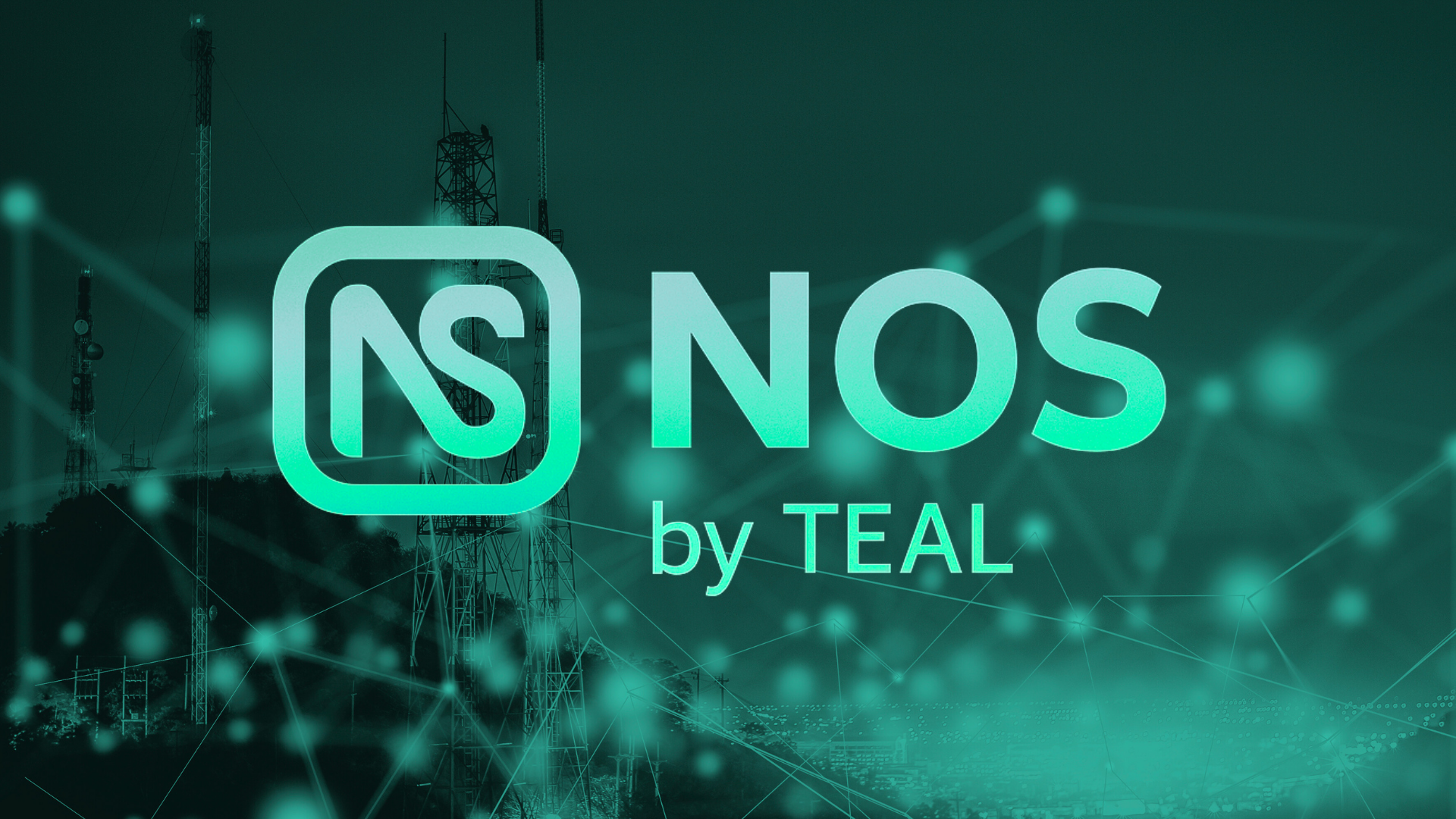Understanding SIM, eSIM, and iSIM: The Evolution and Future Scope
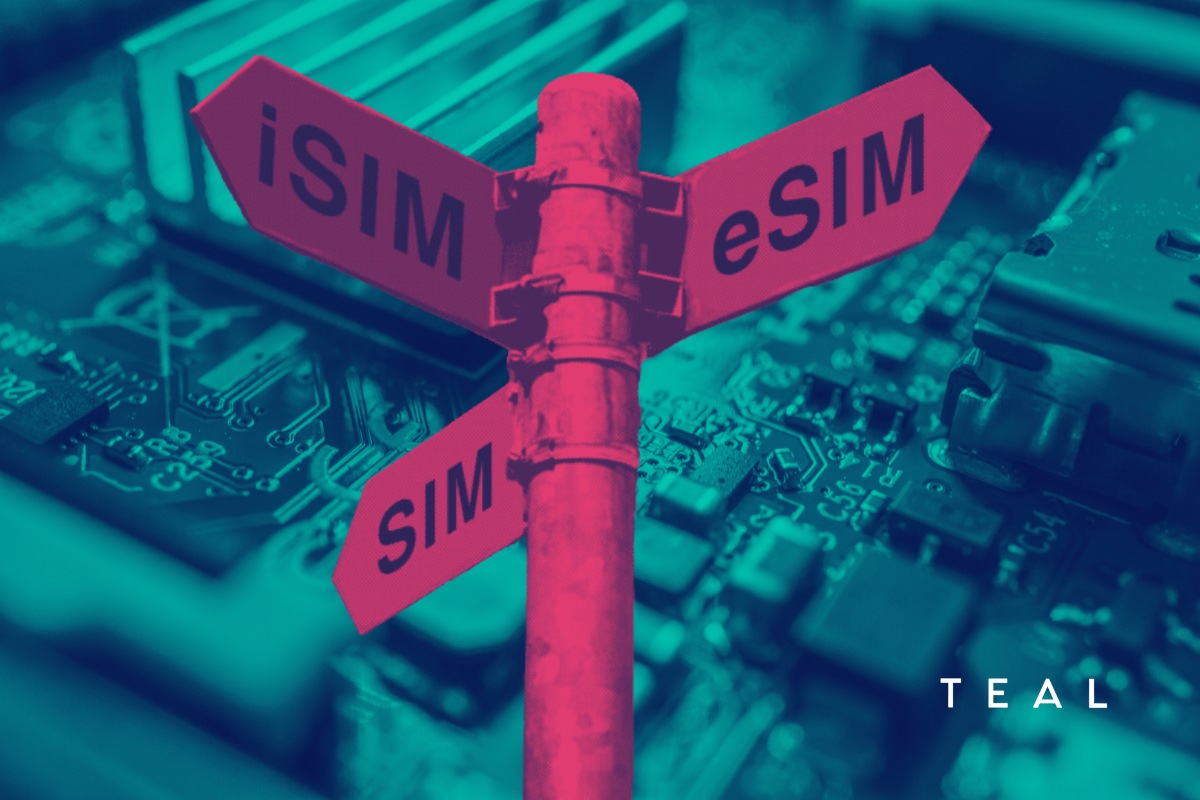
If you’ve been in the IoT industry for any length of time, you’ve likely heard the terms SIM, eSIM, and/or iSIM. However, understanding the similarities and differences between the three can be challenging without the proper context.
SIM, eSIM, and iSIM are different types of SIM technologies with varying capabilities and applications. eSIM and iSIM technologies solve many constraints and limitations of traditional SIM technology, making them more suitable for IoT use cases. iSIM, although still in its infancy, is the most advanced SIM technology and offers several advantages such as size, security, and low power requirements. The future scope for iSIM is promising, with predictions of significant growth in the number of devices with iSIMs by 2025. In this blog post, we provide a clear understanding of SIM, eSIM, and iSIM technologies, their differences, benefits, and potential applications.
Understanding Traditional SIM (UICC) Technology?
To start, the term “SIM” refers to a traditional, java based UICC card that was designed to be physically inserted and/or removed from a device. The first SIM card was developed in 1991 and is an integrated circuit running a card operating system (COS) that is intended to securely store a single international mobile subscriber identity (IMSI) number and its related keys. These keys are used to identify and authenticate a subscriber on a single network. While these cards have been in circulation for over three decades and are still the primary option for many consumer devices, they lack the technological capabilities required for most IoT use cases. Fortunately, the evolution of eSIM solves many of the constraints and limitations of traditional SIM technology.
Superior Connectivity with eSIM
eSIM can either describe an embedded SIM card (hardware) or the electronic network access credential information downloaded to a device (software). With true eSIM tech, device operators can switch networks over-the-air (OTA) and dynamically change the identity (i.e. IMSI) of a subscriber remotely. Further, with this tech, when a device wakes up, an operational profile can be pushed down OTA – meaning the IMSIs stored on a card can change over time and be assigned/re-assigned dynamically. eSIMs from TEAL come in multiple form factors and are similar to a traditional SIM, as eSIMs can be a physical, insertable chip (2FF/3FF/4FF). However, unlike traditional SIMs, eSIMs can also be soldered onto the motherboard of a device (MFF2).
With traditional SIM/UICC technology, mobile network operators (MNOs) are required to pre-install network carrier credentials onto a SIM card. On the other hand, with eSIM/eUICC technology, downloading network credentials can occur post-distribution. This provides manufacturers and operators the opportunity to access and download network carrier profiles over-the-air (OTA) rather than physically removing a SIM card in order to change network credentials. Order your eSIM here!
The Emergence of iSIM Technology?
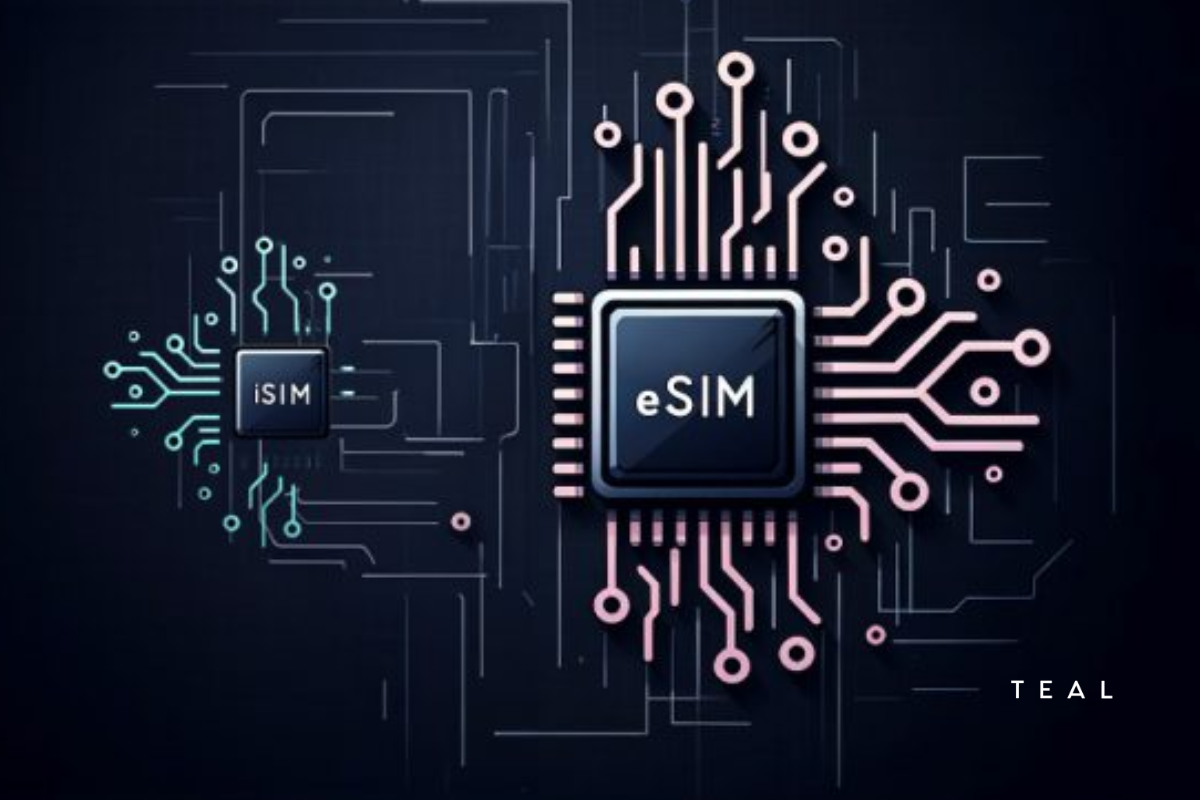
Another term still in its infancy is iSIM or “integrated SIM”. iSIM moves all of the functionalities and benefits of eSIM into a device’s permanent hardware and operating system. In essence, the iSIM enables devices to connect to a cellular network without needing a physical SIM card or soldered eSIM in a printed circuit board (PCB). Unlike eSIM, iSIM doesn’t rely on a separate memory chip and controller. Instead, it enables original equipment manufacturers (OEMs) and processor design companies the ability to design system-on-chip (SOC) architectures that integrate SIM functionality with an existing onboard processor and cellular modem. This changes the way device makers can both deliver and access cellular capabilities for compatible devices. As previously mentioned, this technology is still early in its development and thus there are many moving parts to how it should all work.
As a result, leveraging iSIM today for real-world deployments is currently limited. But how about tomorrow? Recent research foresees that deployment of iSIMs is expected this year (2024), transforming how businesses connect devices and deploy IoT solutions. By 2025, there could be 200 million iSIM-compliant consumer and IoT devices in the field. That said, as we have seen with eSIM technology, not all eSIMs are created equal; there are differences in Card OS, Platform, and operator availability that impact the overall connectivity experience and control for the end user. These same complications apply to iSIM, but now there is less freedom for the IoT manufacturing channels to replace the default connectivity offering if its not to their liking. Many are hoping that when iSIM really starts to pick up, processor OEMs will allow more customization options – such as picking your iSIM OS environment and connectivity platform – more to come soon on this!
The Future Benefits of iSIM
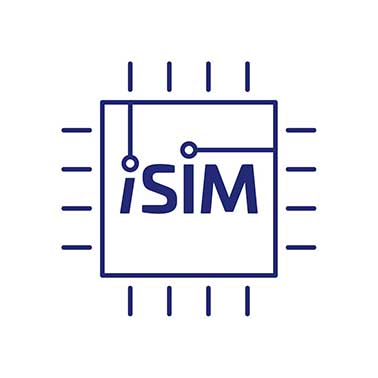
Size
The small footprint of an iSIM allows for better optimization of internal device space, thus eliminating logistic hassles associated with cellular connectivity.
Security
The iSIM is enveloped within a secure and trusted area inside a device’s SoC. This secure area can be customized as per each device’s requirements, offering a secure environment for storing information. iSIM offers the same level of security than eSIM – provided that it has achieved the GSMA certification.
What does the GSMA certification cover?
The GSMA certification covers three things. The first one is it ensures that the secure area of the SOC that will host the iSIM OS is as resistant to sophisticated attacks as the chips which are currently used for embedded chips.
Secondly, it ensures that the sensitive assets loaded by the OEM in their production facilities are also protected.
And the last thing covered by GSMA certification is to ensure that the iSIM is fully compliant with remote SIM provisioning standards, ensuring full interoperability with any remote SIM provisioning-compliant servers available in the market, namely the SM-DP+ servers. Learn about the importance of choosing an eSIM solution that is GSMA certified.
Low Power Requirements
iSIM draws power directly from the SoC and does not require a separate microprocessor to function, thus improving cellular response and minimizing power draw.
Compatibility
iSIM supports 3G, 4G, 5G and future networks and can be linked to any carrier service. This compatibility, combined with its capacity to be used with multiple cellular plans, makes it a versatile tool for IoT device manufacturers.
Easier to handle for OEMs
Device design, device validation, certification, and even manufacturing and logistics will be simpler.
Applications in IoT
From machine-to-machine communications to Industry 4.0, the future of IoT is bright, thanks to the next-gen SIM technologies. Much like eSIM, iSIM is a crucial steppingstone in popularizing standalone and battery-powered IoT devices. From smartwatches to autonomous vehicles and even drones, both eSIM and iSIM technologies can enable much smaller form factors and provide seamless connectivity. As businesses worldwide embrace the IoT revolution, adopting iSIMs will become increasingly widespread.
In conclusion, the evolution from SIM to eSIM and now iSIM shows the rapid pace of technological advancement in the IoT industry. As we move towards a more connected future, understanding these technologies and their potential applications will be essential for businesses and individuals alike.
We’ve provided further helpful details on the similarities and differences between SIM, eSIM, and iSIM in the table below:
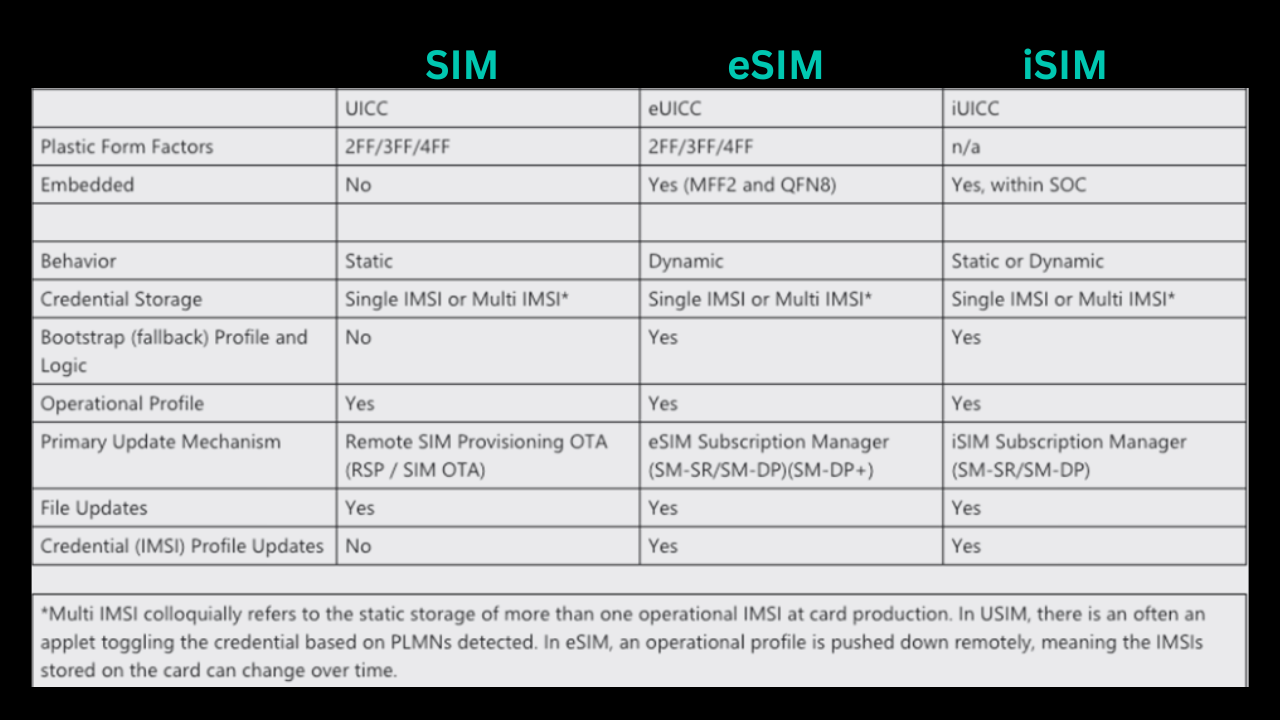
To learn more, schedule a meeting with a TEAL expert here: https://tealcom.io/schedule-meeting
Recent Posts
TEAL’s Network Orchestration Service (NOS) is Changing Cellular Connectivity
Teal Communications Staff2025-07-15T19:59:45+00:00
How TEAL’s eSIM Technology is Shaping the Future of Drone AAM Policy Under FAA Part 108
Teal Communications Staff2025-07-08T16:48:15+00:00
Empowering Freedom, Independence, and Control Through TEAL’s Network Orchestration Service (NOS)
Teal Communications Staff2025-07-03T16:40:46+00:00

